Gardeners in Belgium named Brussels sprouts after the city of Brussels, and grow this vegetable since about 1200 AD. It seems that these plants descended from wild Mediterranean kale, and came to North America during the 1800s. Round green or red sprouts, which grow in the leaves’ axils, look like tiny cabbages.
This delicious vegetable requires a long growing season, but it is worth waiting since it is an excellent source of vitamin C (ascorbic acid), D (calciferol), B9 (folic acid), fiber, and glucosinolates, which may prevent cancer.
Benefits of Brussels Sprouts
There are numerous reasons why Brussels sprouts are beneficial for your health. I will list here a few crucial ones.
- Brussels sprouts are high in nutrients – Those veggies low in calories are high in vitamins, minerals, fiber, vitamin K, vitamin C, vitamin A, vitamin E, vitamin B, manganese, iron, zinc, potassium, phosphorus, selenium, magnesium, and calcium.
- Brussels sprouts are packed with folates – There is a lot of evidence that folic acid prevents congenital disabilities and has a vital role in the formation of DNA. Also, it influences the level of homocysteine and helps in protecting the body against heart disease.
- Brussels sprouts are high in fiber – Thanks to the high content of fiber, this veggie will help in relieving constipation and promoting digestive health. Plus, it is often used as an active compound for weight loss.
- Brussels sprouts may reduce inflammation – Brussels sprouts contain an impressive amount of antioxidant, especially kaempferol. They may help to decrease the risk of many chronic diseases and prevent inflammation by neutralizing free radicals and reducing oxidative stress in body cells. Also, a higher intake of this vegetable may help the body to reduce levels of inflammatory markers in the blood.
- Brussels sprouts contain ALA omega-3 fatty acids – We usually get ALA omega-3 fatty acids from fatty fish, but those veggies are one more excellent source of this compound essential for brain health. They also decrease inflammation, help to keep depression and anxiety under control, and slow cognitive decline. Brussels sprouts will provide approximately 10% of your daily requirement.
- Brussels sprouts may maintain blood sugar levels – High levels of fiber and alpha-lipoic acid, which those veggies contain, may help in regulating blood sugar levels and decreasing risk of diabetes. Some studies show that alpha-lipoic acid affects insulin to efficiently lower blood sugar.
- Brussels sprouts will help in balancing the levels of hormones – Those veggies contain volatile compounds and active ingredients which affect the thyroid gland. Consequently, they directly influence the regulation of the level of hormones in the body and many functions of this gland.
- Brussels sprouts improve bone strength – Most minerals, including iron, manganese, phosphorus, and copper, which are a part of this veggie structure, are essential for building strong bones. Consequently, the intake of this plant may help in the prevention of osteoporosis by keeping the bone mineral density.
- Brussels sprouts may help in cancer prevention – The most important antioxidant this vegetable contains is kaempferol, which may reduce the growth of cancer cells. The other chemical with anticarcinogenic properties found in this plant is sulforaphane.
How to Plant Brussels Sprouts in Your Garden
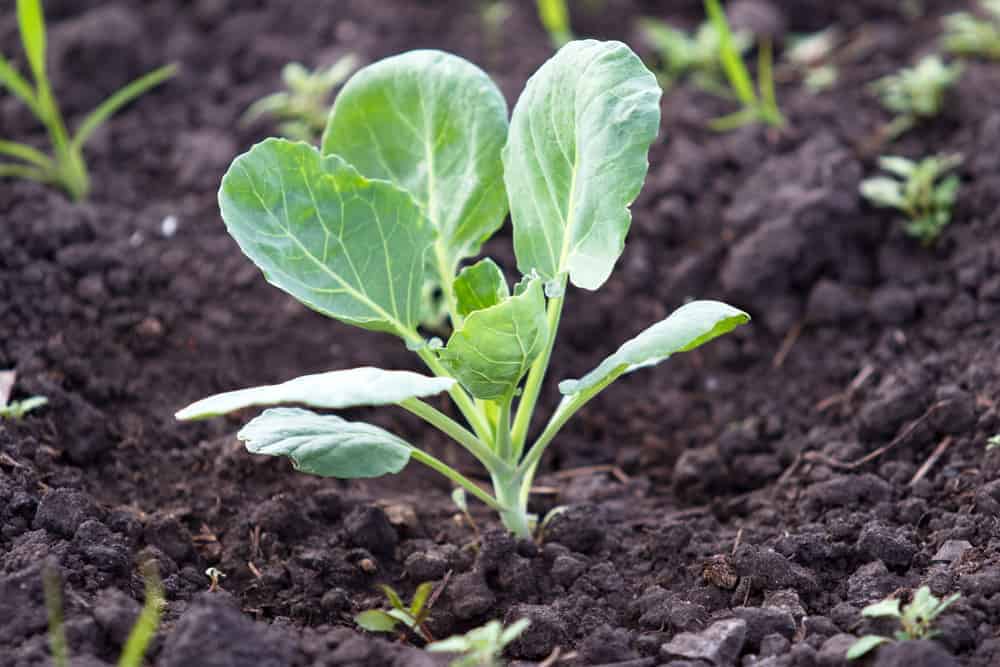
Start sowing Brussels sprouts seeds in pots about 5 to 7 weeks before the time of their transplantation in the garden comes. Place seeds into the ground about 0.5 inches (1.25 cm) deep, and keep your pots on a sunny windowsill. If the temperatures are not lower than 50 F (10 C), you can keep pots with seeds outdoors as well.
You can expect your seeds germinate after two to five days. Transplant seedlings in the garden from April to May when they are 3 to 6 inches (7.6 – 15 cm) tall. Take care not to limit root development, or they may stay stunted after transplanting.
After removing the plants from the pots, soak their root balls in organic, diluted plant fertilizer first. After that, plant your seedlings in the ground 18 to 24 inches (46 – 61 cm) apart, but keep in mind that some varieties may require free space of 30 inches (76 cm).
There is also an option to plant Brussels sprouts once more in June. Do it directly into the ground when the temperatures of the soil are from 45 to 80 F (7 – 27 C). In this way, you will ensure yourself with a continuous harvest.
A few weeks before planting, you should prepare your garden for new spinach seedlings. Cultivate the soil and add some excellent organic compost. It is essential to provide the loose ground which can retain moisture properly. Choose the spot with full sun.
How to Care Brussels Sprouts
Space
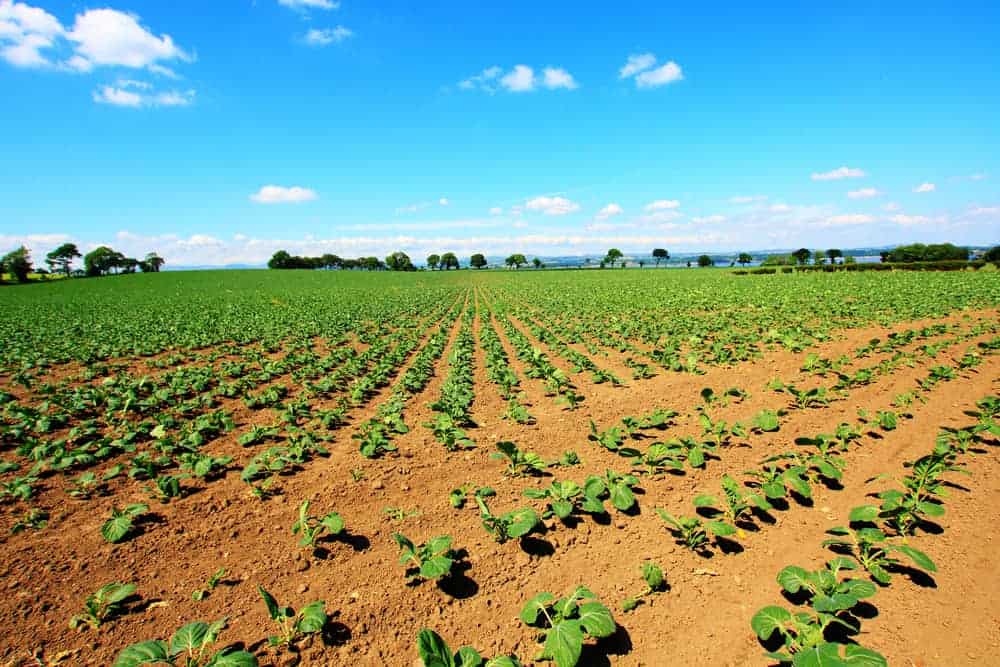
If you sow seeds, you should place them 3 to 4 inches (7.6 – 10 cm) apart in rows 6 inches (15 cm) apart. Otherwise, purchase seedlings and plant them approximately 18 to 24 inches (46 – 61 cm) apart.
Find an adequate space in your garden with full sun to allow your vegetable to thrive. Rotate crops properly to avoid soil-borne diseases.
Soil
Brussels sprouts prefer rich, slightly alkaline soil with the pH from 6 to 6.8. If the ground is rich in organic matter, it will maintain the moisture those veggies need for vigorous and intense growth.
Mulching
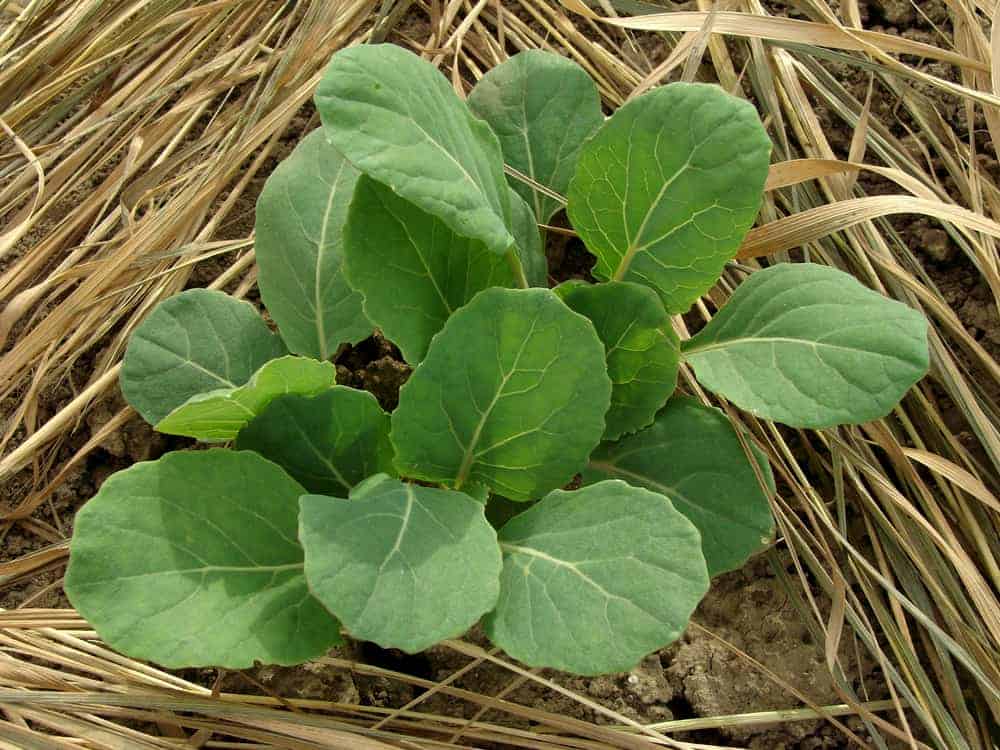
Add a thick layer of mulch to keep the soil moist and free of weeds. The best option is to cover the ground with grass clippings, straw, and hay.
Temperatures
If you live in colder climates, you should sow seeds indoors and transplant young seedlings outside when hard frost passes. In warmer regions, it is better to choose to plant this veggie in autumn. Keep in mind that high temperatures are not suitable for growing Brussels sprouts.
The best temperatures for your plants will be from 45 to 75 F (7 – 24 C), but they can tolerate 20 F (-6.7 C) for a day or two. In fact, those veggies will be more delicious after it was disposed to a light frost.
Watering
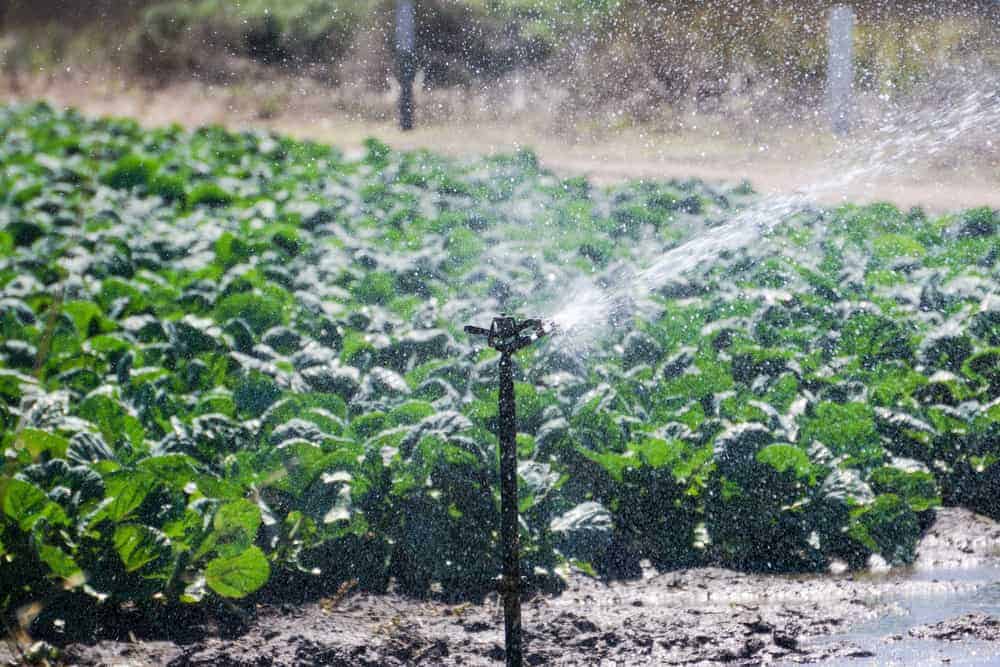
Brussels sprout will thrive when the soil is moist, but not soaked. Water your vegetable regularly to prevent shriveling the sprouts. They will develop fully only if the 1 inch (2.5 cm) of the surface of the ground is never dry.
Fertilizing
You need to fertilize Brussels sprout twice a season. The first time, add some excellent organic, slow release fertilizer or compost a month after planting when the plants are approximately 12 inches (30.5 cm) high. The second time, you should repeat feeding your veggies about four to five weeks before harvest.
Support
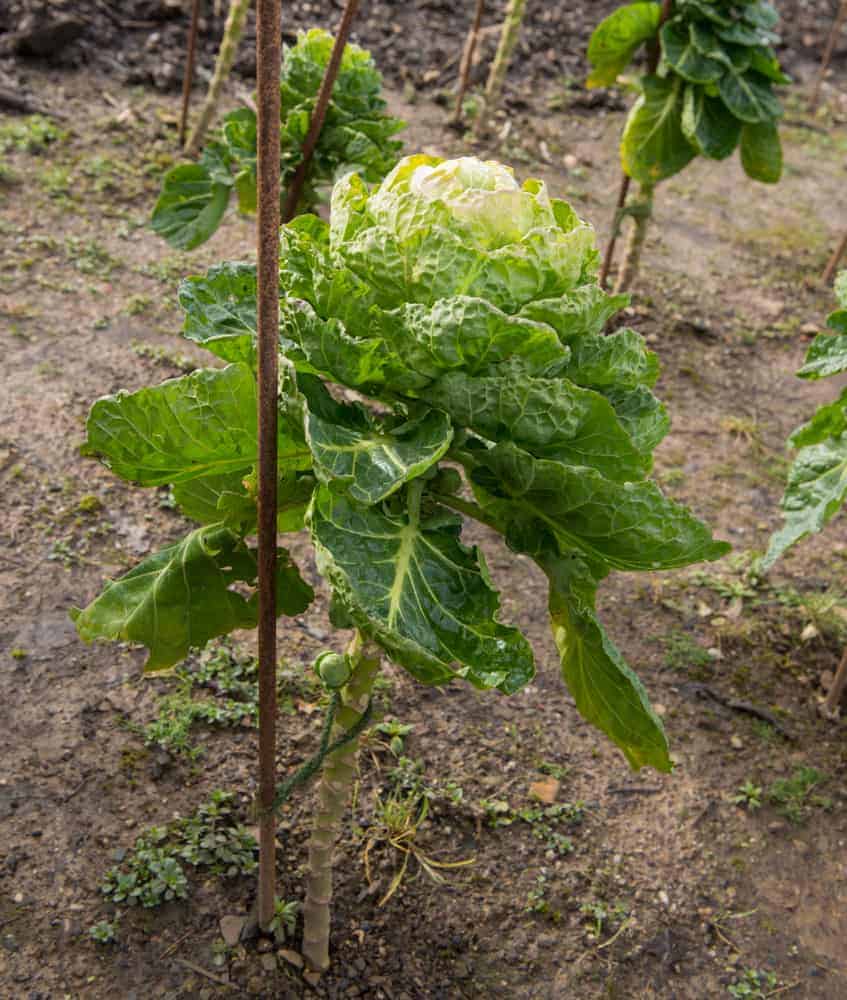
Sometimes, your mature Brussels sprouts can become heavy, and you should provide some support for them. Stake each plant with a wooden stake or thick bamboo stake.
Weeding
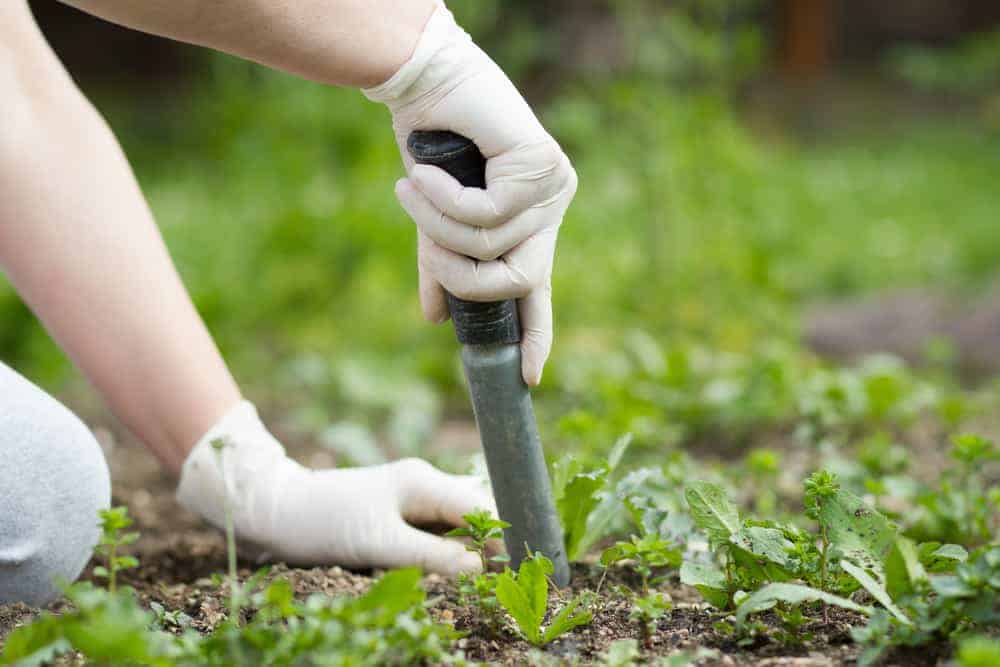
Since Brussels sprouts have a shallow system of roots, you should be highly careful while hoeing and weeding around vegetables’ stems. Every damaging the roots will cause the death of your plants.
How to Harvest Brussels Sprouts
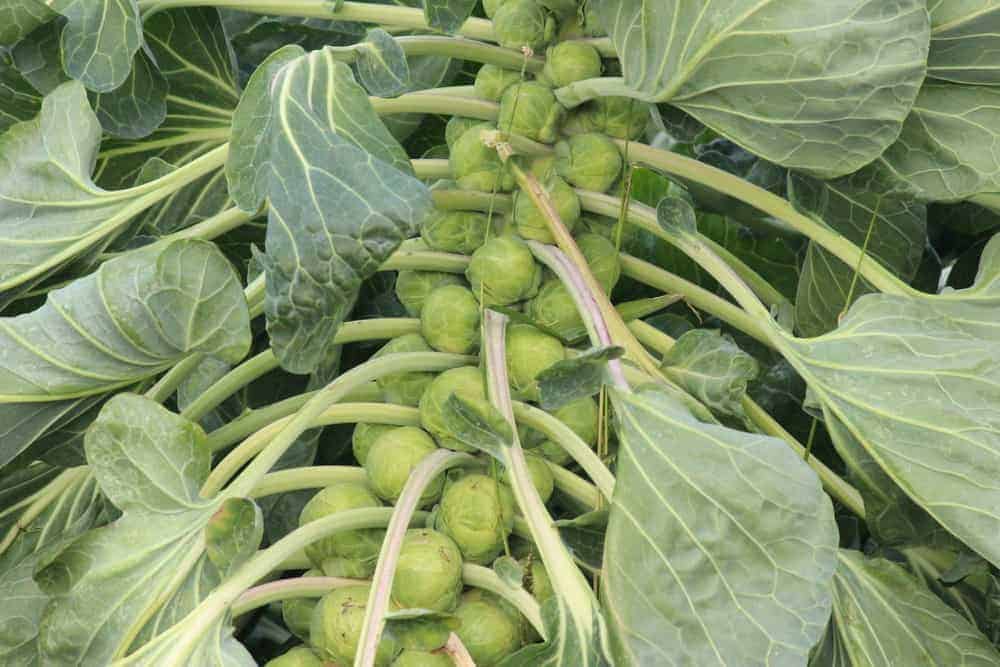
Since those plants are tall, and won’t start making fruits before reaching the full height, you will need to wait for 85 to 105 days from transplanting to ripening your Brussels sprouts.
If you plant early varieties, you can begin collecting in August. Since Brussels sprouts ripen from the stalks’ bases, start harvesting them from the bottom to the top of the plant when becoming 1 to 2 inches large (2.5 – 5 cm). Simply tear them off with a sharp tug down. Don’t forget to snip off yellow leaves from mature plants.
Collect your fruits progressively throughout the season, especially while sprouts are small and full of delicate flavor. Once they become larger, your Brussels sprouts will get a cabbage-like taste.
Don’t let sprouts become too large, because they will turn bitter. It’s up to you if you prefer harvesting smaller, but highly delicious yield or you wish to wait for plenty of fruits with lower-quality taste. In general, you can expect to get approximately 2 to 3 pounds (0.9 – 1.4 kg) of sprouts from just one healthy plant.
There is one more possibility. Transplant your vegetable into pots in the late fall, and keep them safe from frost in the cellar. That way, you can harvest new sprouts for one more month.
Heirloom Brussels sprout varieties |
Hybrid Brussels sprout varieties |
||
| Variety | Harvesting time | Variety |
Harvesting time |
|
Groninger |
105 days | Dimitri Hybrid | 100 to 110 days |
| Falstaff Brussels Sprouts | 102 days | Mighty Hybrid |
100 days |
|
Catskill |
100 days | Octia Hybrid | 78 days |
| Long Island Improved |
90 days |
||
|
Red Rubin Brussel Sprouts |
85 to 95 days |
||
How to Store Brussels Sprouts
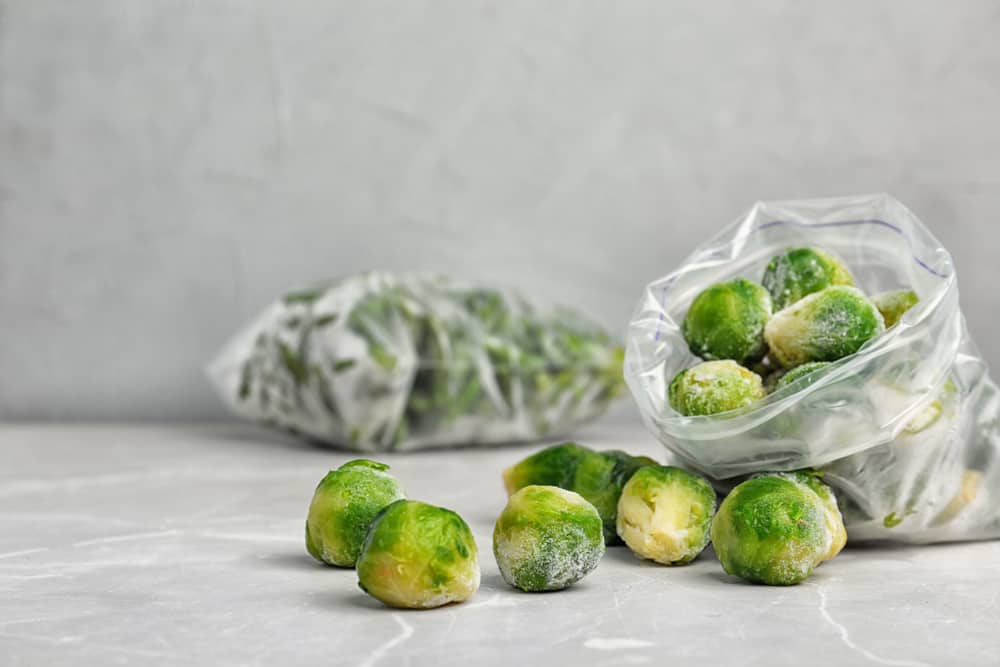
Once collected, put unwashed sprouts into the plastic bag and keep them in the fridge up to a week.
You can also keep your Brussels sprouts in the freezer or root cellar for approximately one to two months. Interestingly, frosted sprouts have even better taste.
Don’t forget to collect the sprout tops at the end of the season. They are delicious.
Brussels Sprouts Pests and Diseases
Club root
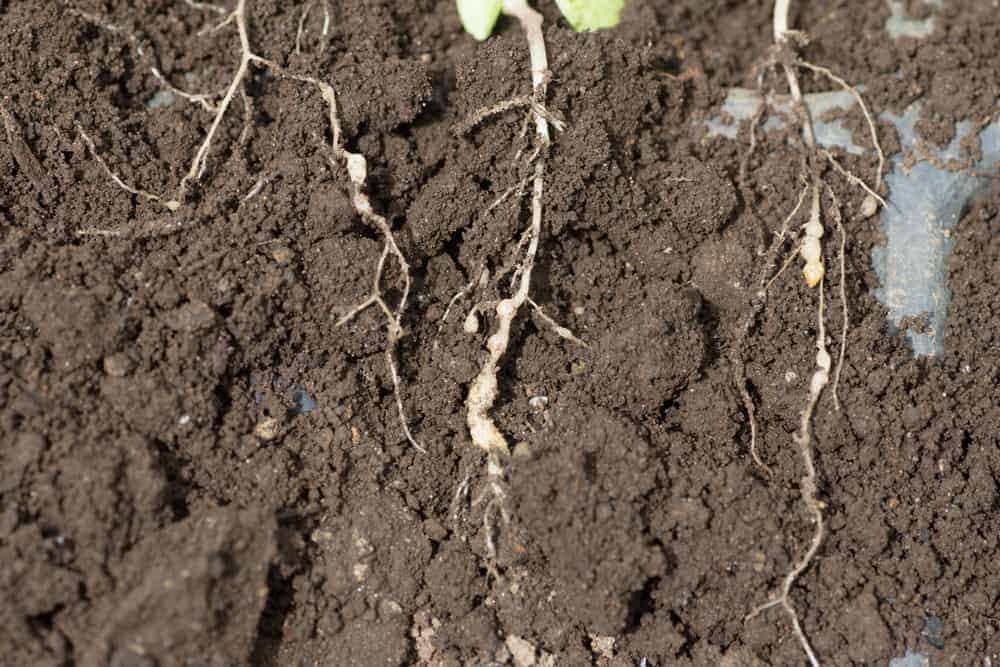
Sometimes it happens that roots of Brussels sprouts appear distorted and swollen. Consequently, the foliage becomes pale, yellowish, and wilted. Help your vegetable by improving drainage. Also, you should add lime to increase the alkalinity of the soil.
Cabbage root flies
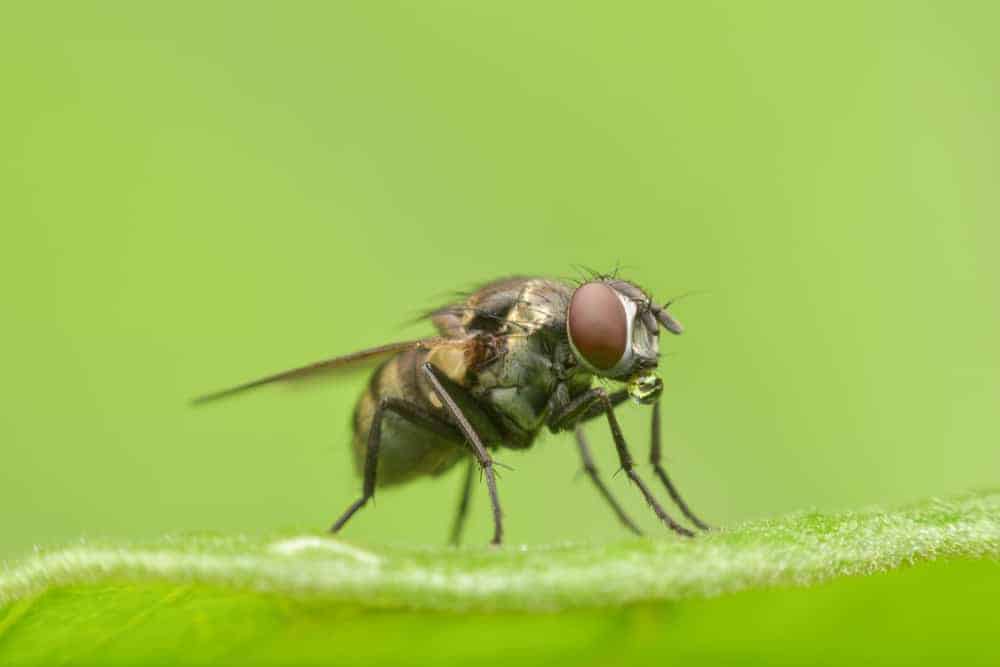
When you notice blue-tinged, wilted leaves during sunny weather, look for tiny white maggots around the plants’ roots. Those larvae feed on the roots of your veggies right below the surface of the ground, slow down the growth of the plant, and cause the death of young seedlings.
To keep your Brussels sprouts safe, fix cabbage collars around the stems or cover the whole plants with a protective mesh.
Cabbage white butterfly caterpillars
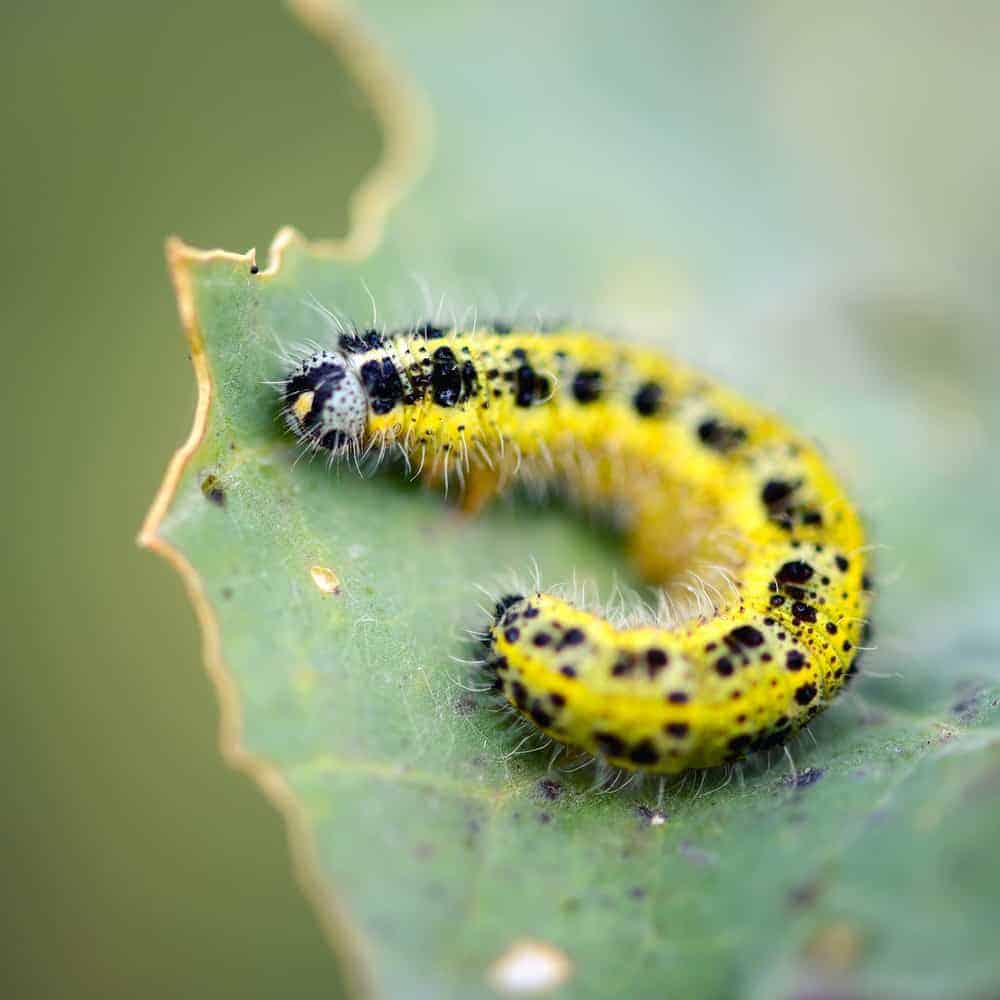
Look for clusters of yellow eggs underside of the leaves regularly from May to October. To prevent those bugs laying eggs, you should protect your veggies with a fine insect-proof mesh. If you spot caterpillars on time, you can pick them off efficiently.
Aphids
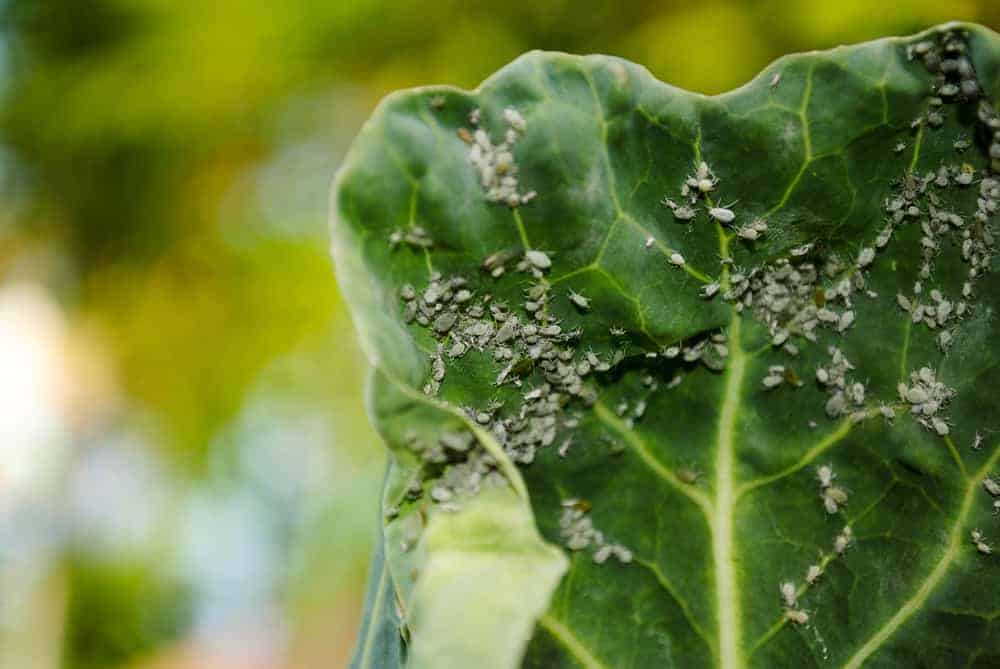
You can easily see green and black flies on the leaves of your veggies. They will attack tender shoots and severely weaken plants. Keep them under control by using an organic pest control spray based on the fatty acid.
Cutworms
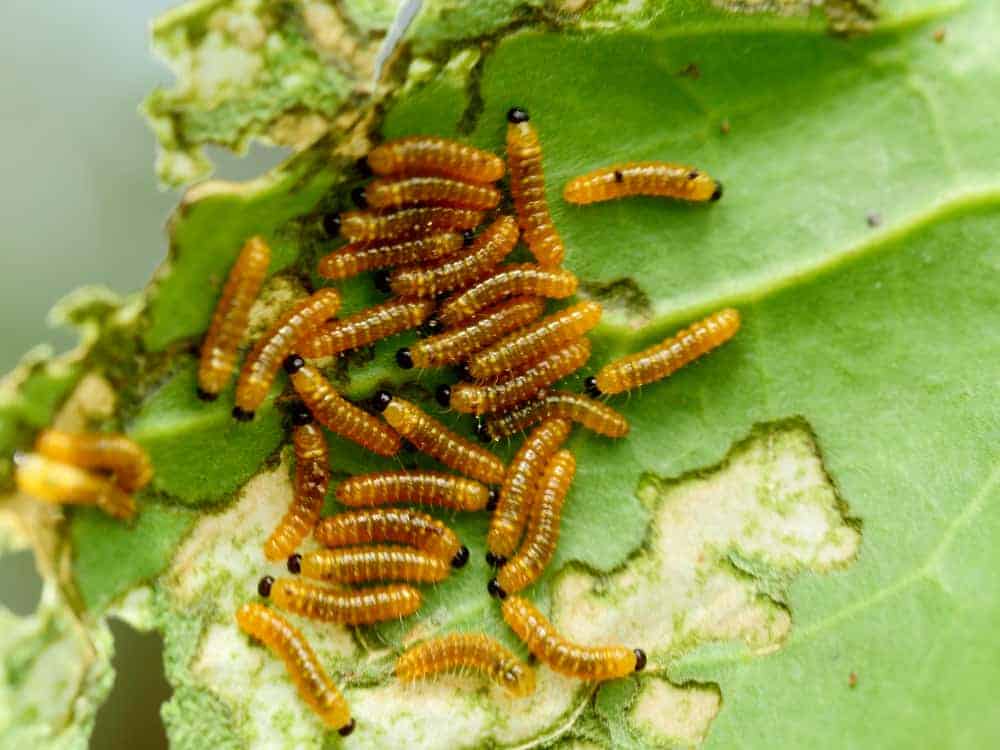
They cut stems at the level of the ground surface and cause the death of seedlings. As soon as you spot one severed stem, you should search the soil right away. Use a nematode-based natural insecticide to kill those creatures.
Birds
Pigeons will adore your Brussels sprouts, especially seedlings, leaves, buds, and even fruits. Cover your plants with netting or use bird-scaring mechanisms or scarecrows to keep birds away.
To get healthy Brussels sprouts, you should remove yellowish leaves regularly to allow unhindered air flow and keep pests and causative agents far away from your veggies.
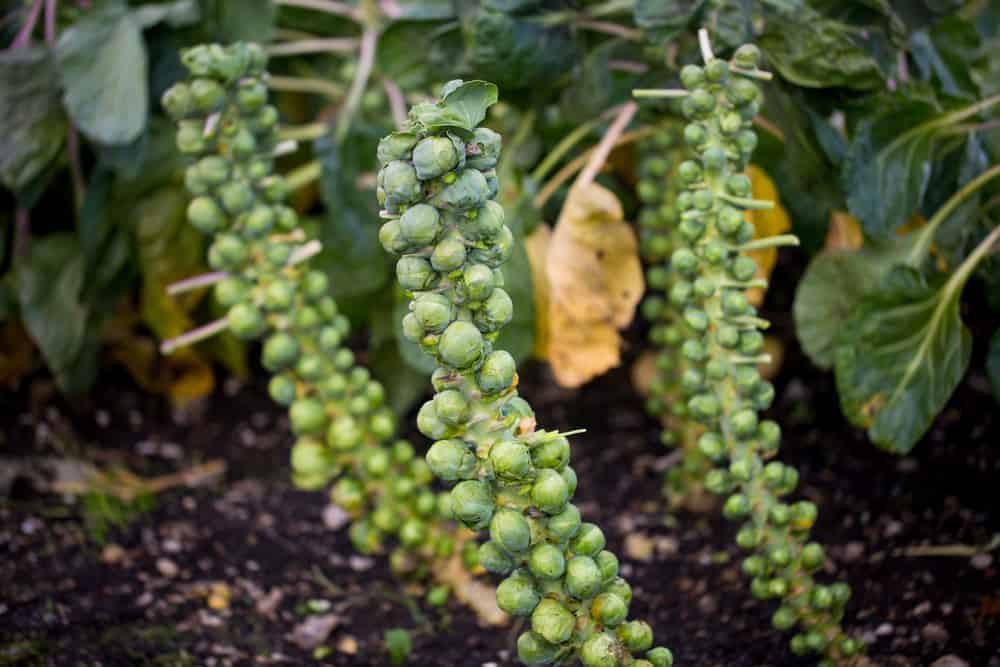
Leave a comment